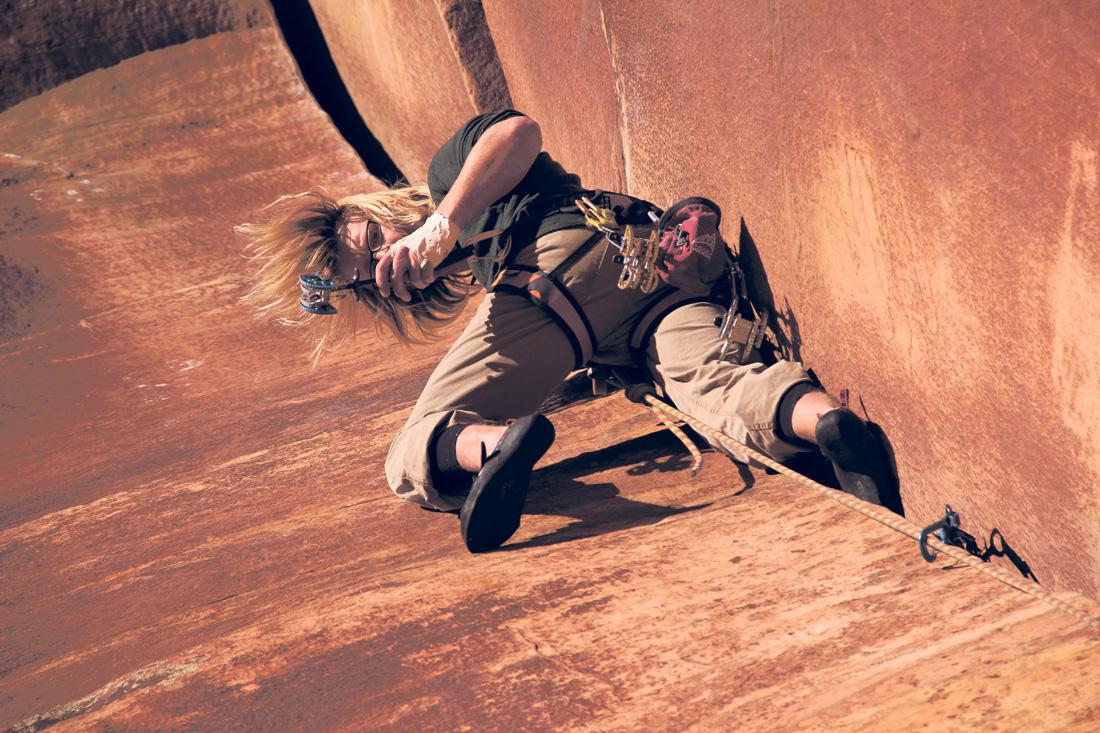COLUMN: There is a word for that – finding peace through a crack in a wall
I tilted my head back and glanced upwards at the towering wall of sandstone which sprung up from my feet to scrape the sky. As I inspected the strikingly straight and consistent crack which split its face, a word came to my mind: paragon.
If the reader is unfamiliar with this term, allow me to reassure them with the consolation that neither was I, until a few weeks ago. Then, my vernacular experienced a rapid proliferation due to a truculent pattern of preparation for the GRE. As it turns out, the higher pedagogical powers have deemed that familiarization with obscure and arcane words is of summative importance to one’s success in graduate school. In order to ensure that one’s vocabulary is sufficiently burgeoning, a large portion of the GRE is constructed to test one’s knowledge of words.
I was registered to take the exam on the last Friday of the break, which meant that many long hours of the usually restful respite from the rigors of academia would be dedicated instead to the inflation of my linguistic abilities to the supernumerous. Still, I wasn’t about to let my studies become deleterious to my recreation. So, when an offer to climb at the fabled Indian Creek, in the Canyonlands National Park near Moab, Utah, was transmitted to me via textual message, I was ebullient.
Within 12 hours, my things were packed and my car was pointed toward Moab. Even though a storm was threatening, our obdurate determination to arrive at a location free of snow and rife with climbing routes caused us to press on. By 7 that evening, we had arrived in the Canyonlands. The temperature was rapidly falling and we soon sequestered ourselves within our sleeping bags to fend off the cold. There, armed with my headlamp and GRE study book, I spent my last waking moments mumbling words to myself, “amalgamate, anachronism, anomalous, anar….”
I woke cold and stiff, trying my best not to be morose. I had discovered that a 30-degree sleeping bag inside of a 20-degree sleeping bag was still not enough to fend off the cold felt in the desert of eastern Utah in late December. I was ambivalent at the moment: miserable from the invective of a cold night spent shivering and excited that we were only minutes away from a climbing adventure. A morning walk served to ameliorate my situation and once we determined that the rock had been sufficiently warmed from exposure to the sun, we set out for the climb.
And thusly I found myself looking up at the crack, with strange vocabulary swirling through my mind. I was a neophyte to crack climbing, and was relying on the expertise of our friend, Jake. Before we began to climb, he outlined the basic crack climbing technique. It is as follows.
1. Shove your hand into the crack. Depending on the crack size, you might insert only your fingers, your palm, make a fist, or stick your whole arm in.
2. Rotate your leg inward as if playing Hacky Sack and insert your toes in the crack. Your knee is then twisted back upwards as close as it can to vertical. You know you are using proper technique because your foot will become secure in the crack and will also hurt a lot.
3. Repeat step one with the other hand.
4. You then step upward on your foot which is inserted in the crack, despite your ankle being twisted at a painful angle.
5. Your other foot is then also jammed into the crack above the other one.
6. Jam your hands higher up in the crack.
7. Move your first foot up.
8. Repeat these steps until you reach the top of the climb.
Crack climbing is by nature invective to the climber. These usual pains and aches associated with the technique were exacerbated by the cold temperature. On my first attempted ascent of a crack, I felt as if my toes were going to break off inside of my shoes, if my ankles didn’t give out first. Still, I remained intransigent, repeatedly jamming hands and feet into the crack. Then the lassitude set in and my strength began to flag. With one last effort, I hauled myself up to chains, letting out a sigh. After I was lowered, I rubbed my ankles to assuage the pain and still couldn’t stop from grinning. I thought about the climb I had just completed and climbing in general. I tried to think of a word to sum it all up. My mind raced over the various options I had been cramming into my cranium. I had to smile as I came up with only a few simple words to describe it. Looking over at Paul, I shared the words I was thinking: “Climbing – it’s just a good time.”
Vocabulary List – For the benefit of the reader, definitions of the following words are supplied:
ameliorate – to improve
truculence – aggressiveness
ambivalent – to have exist in or possess conflicting states or feelings
assuage – to alleviate
burgeoning – very full, brimming
cogent – convincing
deleterious – bad for
distend – expand, swell out
ebullient – showing excitement
exacerbate – worsen, embitter
flag – droop grow feeble
garrulous – wordy, talkative
intransigence – refusal of any compromise
invective – abuse
lassitude – languor; weariness
morose – melancholy
neophyte – beginner, recent convert
obdurate – stubborn
Paragon – model of perfection.
Pedagogical – having to do with science of teaching
proliferation – rapid growth or spread
supernumerous – excessive
– dustin.nash@aggiemail.usu.edu

